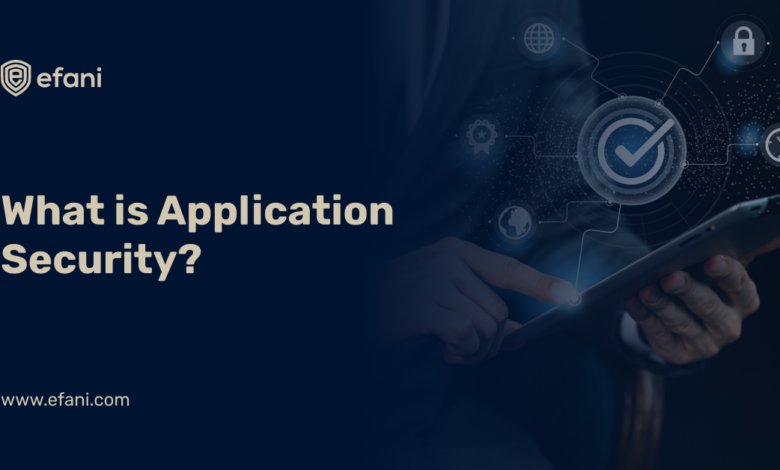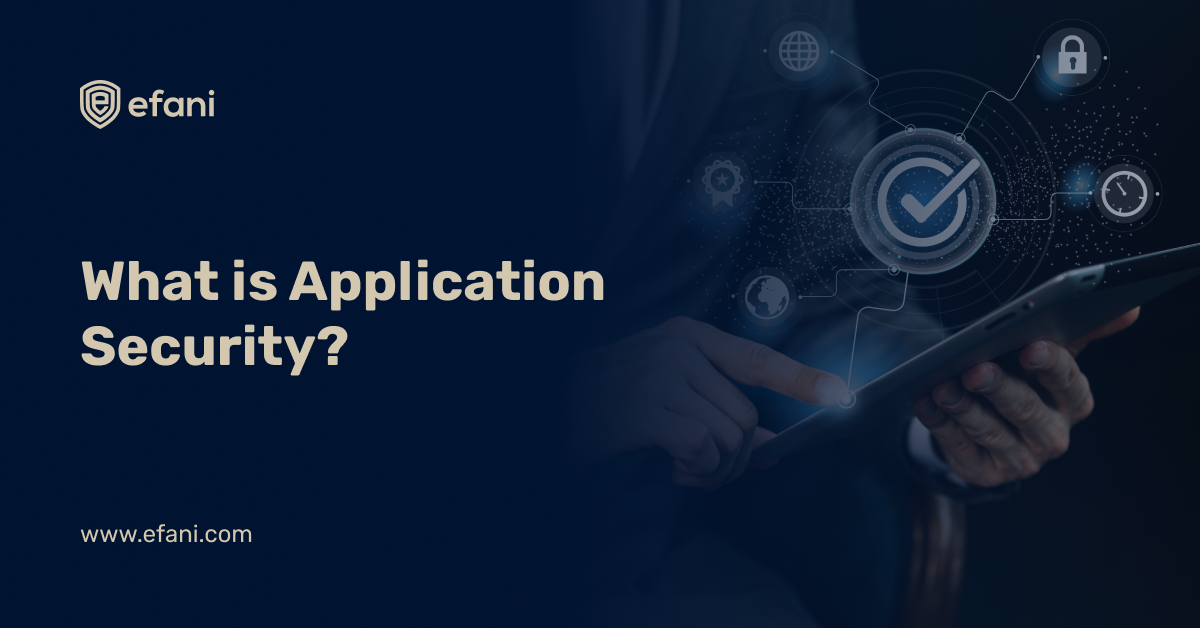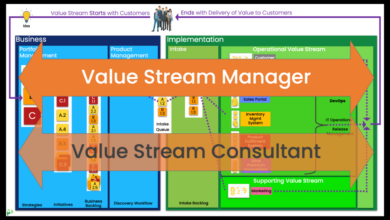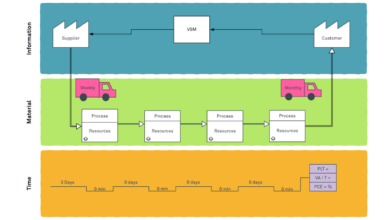
Get a Green Light with Enhanced Application Security
Get a green light with enhanced application security – it sounds simple, right? But navigating the world of application security, approvals, and deployments can feel like scaling Mount Everest. This post breaks down the process, offering practical advice and real-world insights to help you confidently launch your secure applications. We’ll cover everything from understanding core security principles to designing robust security architectures, implementing rigorous testing, and navigating compliance requirements.
Think of this as your ultimate guide to a smoother, safer application launch.
We’ll explore common vulnerabilities, effective remediation strategies, and the crucial roles different stakeholders play in the approval process. I’ll share personal anecdotes from past projects – the wins, the near misses, and the lessons learned the hard way – to make this less of a dry technical manual and more of a helpful companion on your security journey. Get ready to ditch the anxiety and embrace a more confident approach to application security!
Understanding Enhanced Application Security

In today’s digital landscape, where applications are the backbone of most businesses and services, robust security is no longer a luxury but a necessity. Enhanced application security goes beyond basic measures, proactively addressing emerging threats and vulnerabilities to protect sensitive data and maintain operational integrity. This involves a multi-layered approach, encompassing development practices, runtime protection, and incident response strategies.Enhanced application security rests on several core principles.
First, it emphasizes a “security-by-design” philosophy, integrating security considerations into every stage of the software development lifecycle (SDLC), from initial design to deployment and maintenance. Second, it leverages a layered defense approach, combining multiple security controls to create a robust barrier against attacks. This includes preventative measures like input validation and secure coding practices, as well as detective measures such as intrusion detection systems and security information and event management (SIEM) tools.
Third, it focuses on continuous monitoring and improvement, regularly assessing vulnerabilities and updating security controls to adapt to the ever-evolving threat landscape.
Common Application Vulnerabilities
Many common vulnerabilities are effectively targeted by enhanced security measures. These include SQL injection, where malicious code is inserted into database queries to manipulate data; cross-site scripting (XSS), which allows attackers to inject malicious scripts into web pages viewed by other users; cross-site request forgery (CSRF), enabling attackers to trick users into performing unwanted actions; and insecure direct object references (IDOR), allowing unauthorized access to sensitive data.
Additionally, vulnerabilities related to authentication and authorization, insecure data storage, and insufficient logging and monitoring are frequently exploited. Effective enhanced security measures address these weaknesses through secure coding practices, input validation, robust authentication mechanisms, and comprehensive logging and monitoring.
Real-World Application Security Breaches
The consequences of inadequate application security can be devastating. The 2017 Equifax data breach, resulting from an unpatched Apache Struts vulnerability, exposed the personal information of over 147 million people. This resulted in significant financial losses, reputational damage, and legal repercussions for Equifax. Similarly, the 2014 Target data breach, where attackers gained access to customer payment card information through a compromised HVAC vendor, highlighted the importance of securing the entire supply chain.
These breaches underscore the critical need for proactive and comprehensive application security measures, encompassing not only the application itself but also its surrounding infrastructure and ecosystem.
Approaches to Enhanced Application Security
Several approaches exist for achieving enhanced application security. Static Application Security Testing (SAST) analyzes code without execution, identifying potential vulnerabilities during the development phase. Dynamic Application Security Testing (DAST) analyzes the running application, identifying vulnerabilities in a live environment. Interactive Application Security Testing (IAST) combines the benefits of both SAST and DAST, providing real-time feedback during development and testing.
Software Composition Analysis (SCA) identifies vulnerabilities in open-source and third-party components used in the application. Each approach offers unique strengths and weaknesses, and a multi-layered strategy often incorporates a combination of these techniques to achieve optimal security. The choice of approach depends on factors such as the application’s complexity, development methodology, and budget.
The “Green Light” Process
Getting your enhanced-security application deployed isn’t just about coding; it’s about navigating a carefully orchestrated process that ensures both functionality and robust security. This “green light” process involves multiple stages, each crucial for a successful launch. Think of it as a quality control system, but with a laser focus on security.The process hinges on a structured approach, meticulous documentation, and clear communication between development, security, and management teams.
Failure at any stage can delay deployment and potentially compromise security.
Step-by-Step Approval Process
This process Artikels the typical stages an application goes through before receiving final approval for deployment. Variations may exist depending on the organization’s size and specific security policies.
- Security Assessment: The development team submits the application to the security team for a thorough vulnerability assessment. This includes penetration testing, static and dynamic code analysis, and a review of the application’s architecture and design for potential weaknesses.
- Documentation Review: The security team reviews all provided documentation, including the security design document, threat model, and results of the security assessment. This documentation should clearly Artikel the security controls implemented, the risks mitigated, and any residual risks accepted.
- Security Remediation: Based on the assessment and documentation review, the security team may identify vulnerabilities or areas needing improvement. The development team then addresses these issues and resubmits the application for re-assessment.
- Management Approval: Once the security team gives the green light, the application proceeds to management for final approval. This stage often involves a review of the project’s budget, timeline, and risk assessment. Management will consider the potential impact of any residual risks identified by the security team.
- Deployment: After management approval, the application is deployed to the production environment. This may involve a phased rollout to minimize disruption and allow for monitoring of the application’s performance and security in a live setting.
Best Practices for Documenting Security Measures
Comprehensive documentation is critical for efficient review and approval. Poor documentation can significantly delay the process.
Security documentation should be clear, concise, and readily accessible. Use standardized templates and formats to maintain consistency. It should include:
- Security Design Document: This Artikels the application’s security architecture, including the security controls implemented (e.g., authentication, authorization, input validation).
- Threat Model: This identifies potential threats and vulnerabilities and details the mitigation strategies employed.
- Vulnerability Assessment Report: This documents the results of security testing, including identified vulnerabilities and their severity.
- Remediation Plan: This Artikels the steps taken to address identified vulnerabilities.
- Security Configuration Checklist: This verifies that all necessary security settings are correctly configured.
Security Considerations Checklist
Before seeking approval, ensure the following points are addressed.
- Authentication and Authorization: Robust mechanisms are in place to verify user identities and control access to resources.
- Input Validation: All user inputs are thoroughly validated to prevent injection attacks (SQL injection, cross-site scripting).
- Data Protection: Sensitive data is encrypted both in transit and at rest.
- Session Management: Secure session handling prevents session hijacking.
- Error Handling: Error messages do not reveal sensitive information.
- Logging and Monitoring: Comprehensive logging and monitoring are implemented to detect and respond to security incidents.
Stakeholder Roles in the Approval Process
Each stakeholder plays a vital role in ensuring the application meets security standards.
Developers: Responsible for building the application with security in mind, implementing security controls, and addressing vulnerabilities identified by the security team.
Security Team: Responsible for conducting security assessments, reviewing documentation, identifying vulnerabilities, and providing guidance to the development team.
Management: Responsible for reviewing the security assessment results, approving the deployment, and overseeing the overall risk management process.
Security Testing and Validation
Getting your application the coveted “green light” requires a robust security testing and validation process. This isn’t just a box-ticking exercise; it’s a crucial step to ensure your application is resilient against a range of potential threats and vulnerabilities. A well-defined strategy, employing various testing methodologies, is paramount to achieving a secure and reliable application.
A comprehensive approach to security testing involves strategically combining various methods to identify and mitigate risks effectively. This ensures a thorough examination of your application’s security posture, uncovering potential weaknesses before they can be exploited. The process doesn’t end with testing; it also includes understanding the results and implementing effective remediation strategies.
Security Testing Methodologies
Security testing encompasses a wide array of methodologies, each designed to uncover different types of vulnerabilities. Choosing the right combination depends on the application’s complexity, its intended use, and the level of risk it presents.
Two commonly used methodologies are penetration testing and vulnerability scanning. Penetration testing, often referred to as “pen testing,” simulates real-world attacks to identify exploitable weaknesses. Vulnerability scanning, on the other hand, uses automated tools to identify known vulnerabilities based on a database of common security flaws. Both approaches are valuable, but they offer different perspectives and should be used in conjunction for maximum effectiveness.
Interpreting Security Test Results and Addressing Vulnerabilities
The results of security tests provide crucial insights into your application’s security posture. These results should be meticulously reviewed, prioritizing vulnerabilities based on their severity and potential impact. A well-defined vulnerability management process is essential for tracking, prioritizing, and resolving identified issues. This process typically involves assigning severity levels (critical, high, medium, low), assigning ownership to specific teams, and setting deadlines for remediation.
It’s crucial to remember that simply identifying vulnerabilities isn’t enough. Effective remediation is key. This requires a deep understanding of the root cause of each vulnerability and the implementation of appropriate fixes. Proper documentation throughout the process ensures accountability and facilitates future audits.
Remediation Strategies for Common Security Flaws
The following table illustrates remediation strategies for some common security vulnerabilities. Remember that the specific remediation approach will depend on the context of the vulnerability and the application’s architecture.
| Vulnerability Type | Description | Remediation Strategy | Impact |
|---|---|---|---|
| SQL Injection | Malicious SQL code is injected into application inputs to manipulate database queries. | Use parameterized queries or prepared statements; input validation and sanitization; least privilege access control. | Data breach, data modification, denial of service. |
| Cross-Site Scripting (XSS) | Malicious scripts are injected into a website to steal user data or hijack sessions. | Encode user inputs; use output encoding; implement a Content Security Policy (CSP); input validation. | Session hijacking, data theft, phishing attacks. |
| Cross-Site Request Forgery (CSRF) | Tricking a user into performing unwanted actions on a web application in which they’re currently authenticated. | Use anti-CSRF tokens; verify HTTP referer headers; implement double submit cookie; use HTTPS. | Unauthorized actions, session hijacking. |
| Insecure Direct Object References (IDOR) | Direct access to resources without proper authorization checks. | Implement robust authorization checks; use unique identifiers; avoid predictable IDs. | Unauthorized access to sensitive data or resources. |
Security Architecture and Design: Get A Green Light With Enhanced Application Security
Building a secure application isn’t just about patching vulnerabilities after they’re found; it’s about designing security into the very fabric of the application from the ground up. A robust security architecture is the cornerstone of enhanced application security, ensuring that even if one part fails, the entire system remains resilient. This proactive approach significantly reduces the attack surface and minimizes the impact of successful breaches.Secure coding practices are paramount in achieving this.
They form the bedrock upon which a secure architecture is built. Without meticulously written, well-tested code, even the most sophisticated architecture will be vulnerable. This involves understanding and applying principles like input validation, output encoding, and secure handling of sensitive data. Neglecting these practices invites a wide range of attacks, from simple injection flaws to complex privilege escalation scenarios.
Secure Coding Practices and Their Importance
Secure coding isn’t just about following a checklist; it’s a mindset. It’s about proactively considering potential security implications at every stage of development. This involves using secure libraries and frameworks, regularly updating dependencies, and employing techniques like static and dynamic code analysis to identify vulnerabilities early in the development lifecycle. The cost of fixing a security flaw discovered during development is significantly lower than addressing a vulnerability in production.
For example, failing to sanitize user inputs can lead to SQL injection, allowing attackers to execute arbitrary SQL commands against your database, potentially leading to data breaches or complete system compromise.
Different Security Architectures
Several architectural patterns contribute to enhanced application security. Microservices architecture, for example, promotes modularity and isolation. Each microservice can be independently secured, limiting the impact of a breach to a single component. Layered security, on the other hand, implements a defense-in-depth strategy, placing multiple security controls at various layers of the application. This could include firewalls, intrusion detection systems, web application firewalls (WAFs), and data encryption at rest and in transit.
Choosing the right architecture depends on the specific application’s needs and risk profile.
Hypothetical Scenario: Preventing a Cross-Site Scripting (XSS) Attack
Imagine an e-commerce application built using a microservices architecture. One microservice handles user authentication, another manages product catalogs, and a third processes payments. If an attacker attempts an XSS attack targeting the product catalog microservice, they might try to inject malicious JavaScript into product descriptions. However, because the product catalog microservice is isolated and employs robust input validation and output encoding (escaping special characters), the malicious script is neutralized.
The attacker’s attempt fails, and the authentication and payment microservices remain unaffected, preserving the integrity of user data and financial transactions. This illustrates how a well-designed microservices architecture with secure coding practices can contain the impact of an attack.
Secure Design Patterns and Their Application
Several design patterns specifically enhance security. The “facade” pattern can be used to abstract complex security logic from the main application, making it easier to manage and update security controls. The “observer” pattern can be used to implement real-time security monitoring, alerting administrators to suspicious activity. The “strategy” pattern allows for flexible implementation of different security algorithms or authentication methods without modifying the core application logic.
For instance, in a payment processing system, the strategy pattern can allow switching between different payment gateways (e.g., PayPal, Stripe) without affecting the main application flow, ensuring flexibility and security. Each pattern offers specific benefits depending on the context.
Continuous Monitoring and Improvement
Securing an application isn’t a one-time event; it’s an ongoing process. Once your application receives the “green light” and goes live, the work continues. Continuous monitoring and improvement are crucial for maintaining the enhanced application security you’ve worked so hard to achieve. This involves proactively identifying and addressing vulnerabilities before they can be exploited, and rapidly responding to any incidents that do occur.Maintaining a robust security posture requires a multi-faceted approach, encompassing proactive threat detection, swift incident response, and a commitment to regular security updates and audits.
By implementing a well-defined system for continuous monitoring and improvement, you can significantly reduce your risk exposure and ensure the long-term security of your application.
Security Monitoring Tools and Dashboards
Effective security monitoring relies on the right tools. Security Information and Event Management (SIEM) systems are invaluable for collecting and analyzing security logs from various sources across your infrastructure. These systems can be configured to generate alerts based on predefined rules, flagging suspicious activity such as unusual login attempts, data exfiltration attempts, or unexpected access patterns. Dashboards provide a centralized view of this information, allowing security teams to quickly identify and prioritize potential threats.
For example, a dashboard might visually represent the number of failed login attempts over time, highlighting spikes that warrant further investigation. Real-time dashboards offer immediate visibility into the health of your application’s security, providing crucial insights for timely intervention.
Incident Response Procedures
A well-defined incident response plan is essential for mitigating the impact of security breaches. This plan should Artikel clear steps to follow in the event of a security incident, including:
- Detection and Analysis: Identifying the nature and scope of the incident.
- Containment: Isolating the affected systems to prevent further damage.
- Eradication: Removing the threat and restoring systems to a secure state.
- Recovery: Bringing systems back online and restoring data.
- Post-Incident Activity: Conducting a thorough review to identify weaknesses and improve future response.
Regular drills and simulations are crucial to ensure the plan’s effectiveness and to familiarize the team with their roles and responsibilities. Consider simulating a phishing attack or a denial-of-service attack to test your response capabilities. The goal is to minimize downtime and data loss, and to quickly restore normal operations.
Regular Security Audits and Updates
Maintaining enhanced application security requires a proactive approach to updates and audits. A comprehensive plan should include:
- Regular Vulnerability Scanning: Conducting automated scans to identify known vulnerabilities in your application and its dependencies.
- Penetration Testing: Employing ethical hackers to simulate real-world attacks to identify vulnerabilities that automated scans might miss.
- Software Updates: Implementing a process for promptly applying security patches and updates to address known vulnerabilities.
- Security Awareness Training: Educating employees about security best practices and common threats.
- Code Reviews: Regularly reviewing application code to identify potential security flaws before deployment.
- Compliance Audits: Ensuring your application meets relevant industry regulations and compliance standards (e.g., PCI DSS, HIPAA).
This plan should be regularly reviewed and updated to reflect changes in the threat landscape and the evolution of your application. For instance, if a new vulnerability is discovered in a library your application uses, your update process should address it swiftly. Regular audits provide a valuable opportunity to identify and correct weaknesses before they can be exploited.
Compliance and Regulatory Requirements
Navigating the complex landscape of application security often means understanding and adhering to various compliance and regulatory requirements. These regulations aren’t just boxes to tick; they’re crucial for protecting sensitive data, maintaining user trust, and avoiding potentially crippling legal and financial penalties. Failing to comply can lead to significant repercussions, impacting your organization’s reputation and bottom line.This section will explore key security standards and regulations, methods for demonstrating compliance, necessary documentation, and the consequences of non-compliance.
We’ll focus on practical steps and examples to help you integrate compliance effectively into your application security processes.
Relevant Security Standards and Regulations
Numerous standards and regulations govern application security, depending on the industry and the type of data handled. Key examples include the General Data Protection Regulation (GDPR) in Europe, the Health Insurance Portability and Accountability Act (HIPAA) in the United States, and the Payment Card Industry Data Security Standard (PCI DSS) for organizations handling credit card information. Other relevant standards might include ISO 27001 (information security management) and NIST Cybersecurity Framework.
The specific regulations applicable to your application will depend on its functionality and the data it processes. A thorough risk assessment is essential to identify all relevant regulations.
Demonstrating Compliance
Demonstrating compliance involves a multi-faceted approach. This includes implementing appropriate security controls throughout the application’s lifecycle, from design and development to deployment and ongoing monitoring. Regular security testing and vulnerability assessments are crucial for identifying and mitigating risks. Maintaining comprehensive documentation of these processes, including policies, procedures, and test results, is vital for demonstrating compliance to auditors.
This documentation should clearly show that your organization understands the relevant regulations and has implemented the necessary controls to meet their requirements. Regular audits, both internal and external, can help identify gaps and ensure ongoing compliance.
Required Documentation
The specific documentation required varies depending on the regulations, but generally includes:
- Risk Assessments: Detailed assessments identifying potential security risks and vulnerabilities.
- Security Policies and Procedures: Documents outlining security practices and protocols.
- Vulnerability Scan Reports: Results from regular security testing and penetration testing.
- Incident Response Plan: A documented plan for handling security incidents.
- Data Protection Impact Assessments (DPIAs): Assessments of the potential impact of data processing activities (often required under GDPR).
- Training Records: Proof that employees have received adequate security awareness training.
- Audit Reports: Results from internal and external audits confirming compliance.
These documents serve as evidence that your organization is actively managing security risks and adhering to regulatory requirements. They also provide a valuable resource for continuous improvement and identifying areas for strengthening security posture.
Implications of Non-Compliance, Get a green light with enhanced application security
Non-compliance can result in severe consequences. These can include hefty fines, legal action, reputational damage, loss of customer trust, and potential business disruption. For example, GDPR violations can result in fines up to €20 million or 4% of annual global turnover, whichever is greater. HIPAA violations can lead to significant financial penalties and legal repercussions. The cost of non-compliance often far outweighs the investment in implementing and maintaining appropriate security controls.
Proactive compliance is not just a regulatory obligation; it’s a sound business practice that protects your organization from significant risks.
Final Thoughts

Successfully navigating the path to enhanced application security isn’t just about ticking boxes; it’s about building a culture of security from the ground up. By understanding the core principles, implementing robust testing strategies, and establishing a clear approval process, you can significantly reduce your risk and confidently launch secure applications. Remember, proactive security measures aren’t just about compliance; they’re about protecting your users, your reputation, and your business.
So, go forth, build securely, and get that green light with pride!
User Queries
What are the biggest risks of ignoring application security?
Ignoring application security exposes your organization to data breaches, financial losses, reputational damage, legal penalties, and loss of customer trust.
How much does enhanced application security cost?
The cost varies greatly depending on the complexity of your application, the level of security required, and the resources you dedicate to it. However, the cost of
-not* investing in security is often far greater.
What are some common security testing tools?
Popular tools include OWASP ZAP, Burp Suite, Nessus, and many others, each with strengths in different areas.
How often should I perform security audits?
Regular security audits, at least annually, are recommended, with more frequent checks for high-risk applications.





